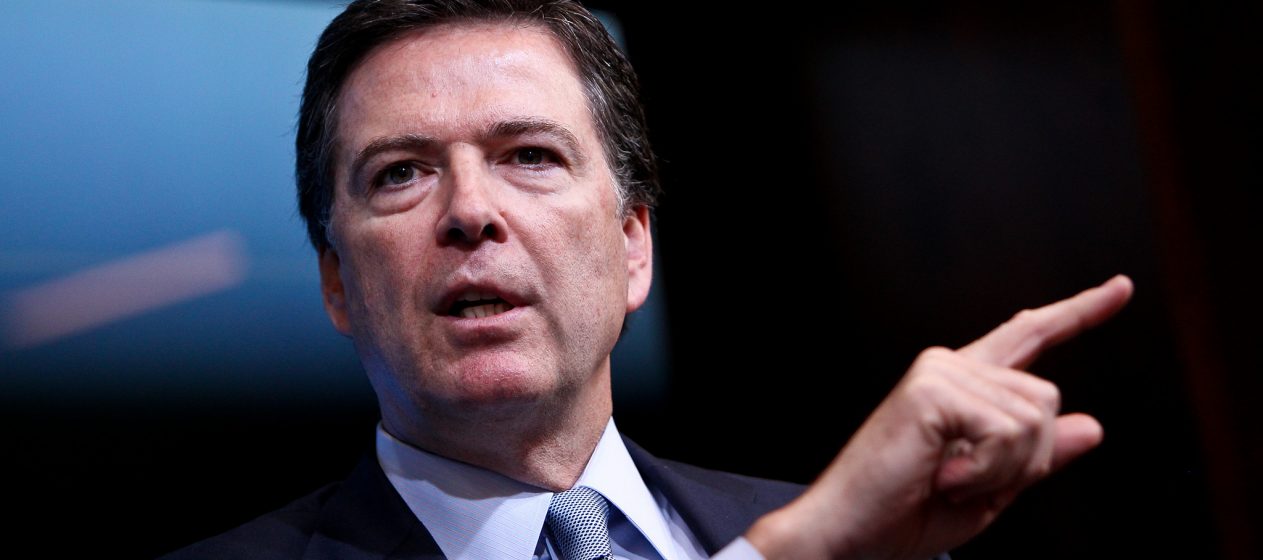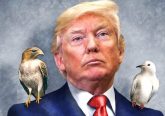On May 9, President Donald Trump fired the director of the FBI James Comey in a risky and largely unprecedented move. Initially, members of the Trump administration argued that Comey was fired because his incompetent handling of Hilary Clinton’s email scandal had cost him his legitimacy.
Why would President Trump fire the head of an agency that symbolizes the integrity of law enforcement and rule of law of which the American system is so proud? In American history only one other FBI director has ever been fired. In 1993, President Bill Clinton fired William Sessions, a Republican hold-over from the Ronald Reagan administration. As the Nixon Presidential Library was at pains to point out, not even President Richard Nixon dared to dismiss the FBI director during the Watergate scandal.
Theory and evidence suggest that Trump fired Comey due to their diverging interests. Particularly, President Trump calculated he would lose agency by keeping an FBI Director who threatened the stability of his presidency.
Presidential systems, like the United States, grant the executive many powers that other executives do not have. Presidents enjoy the prerogative of modifying their cabinet with low restrictions, and dismissing cabinet members at will. In this regard, cabinet allocations are a signal and a powerful tool that reflects the policy-making strategy a president intends to follow.[1] If a president intends to rule mostly by decree, he or she will appoint political outsiders, loyalists and technocrats to cabinet positions. On the other hand, if the intention is to rely more on the legislature for policy making, presidents will appoint career politicians, including members of the Congress, to win their support.[2]
Modifications of cabinets occur mainly for three reasons. The first are changing circumstances in the national economic context. For example, during economic crises. Second, political scandals, mismanagement or corruption can lead to the removal of a Secretary in order to release the pressure from the executive. Therefore, cabinet changes can be used as an “escape valve” for the president in order to regain control, credibility or inject a moral boost to the presidency.[3] President Trump already altered his inner circle early in his presidency for this reason when he accepted the resignation of his National Security Advisor Michael Flynn after only 23 days in office in order to distance his administration from accusations of illicit links to Russia.
Comey’s dismissal does not conform to any of these two reasons. The firing of the Director of the FBI can hardly be justified on economic grounds, and despite the White House claiming that Comey’s dismissal was based on mismanagement and lack of credibility, evidence and theory suggest otherwise. Both Democrats and Republicans criticized Comey for his handling of the investigation into Clinton’s private email server. However, neither of these parties accused him of ethical wrongdoing or condemned him as a threat to law enforcement.
The White House justifies firing Comey on grounds that he mismanaged the Clinton investigation; nevertheless the Acting Director of the FBI Andrew McCabe recently testified that Comey enjoyed the confidence of the FBI staff. Similarly, Trump praised Comey’s actions and independence on the eve of the election and after being sworn in as President, even if he was ambivalent in the past.
The dismissal conforms to a third reason characteristic of cabinet changes. Presidents dismiss cabinet members if they perceive that they will stand to lose agency by maintaining an agency head as a member of their inner circle. Particularly, if divergent interests between the President and an individual lead to internal conflicts, jeopardize policy goals, or threaten the stability of the executive, presidents may decide to dismiss a cabinet member.[4]
Why might President Trump perceive that he and Comey had diverging interests, and that Comey’s presence threatened the stability of his presidency? The principal reason might well be that in his position as Director of the FBI, Comey was in charge of investigating possible collusion between the Trump campaign and the Russian government. The same FBI Director who took the bold step to reopen an investigation into the possible misconduct of a presidential candidate days before the election would have doubtlessly pursued an investigation into the links between Trump advisors and Russian officials. President Trump was aware of this situation and perceived the FBI investigation as a threat to his administration.
Indeed, statements from the President himself suggest that the Russia investigation played a large role in the decision to fire Comey.
Shortly after the dismissal, Trump declared in an interview that he made the decision to fire Comey independently of the Deputy Attorney General’s recommendations. Likewise, he stated that his decision was not based on Comey’s loss of credibility but in part on the Russia investigation. Lastly, the New York Times reports that Trump demanded fidelity and asked Comey to close the investigation linking the Russian government and former National Security Advisor Michael Flynn.
If the goal was to shut down these investigations, Trump’s decision to fire Comey has backfired. While the President may appoint a new FBI Director with different immediate priorities and who is more closely aligned to Trump, the issue of purported links between the Trump campaign and Russian officials continues to loom large over his presidency. The Justice Department appointed former FBI Director Robert Mueller as Special Counsel to investigate possible collusion between President Trump’s advisers and Russian officials to influence the outcome of the 2016 election. These events are reminiscent of Nixon’s efforts, who succeeded in firing the special prosecutor in charge of the Watergate burglary, but ultimately ended up resigning as president.
While the final outcome is still unknown, as events are still unfolding, it appears that Trump fired Comey for the perceived threat that he represented for the nascent administration.
[1] Amorim Neto, O. (2006). “The presidential calculus: Executive policy-making and cabinet formation in the Americas.” Comparative Political Studies, 39, 415-440.
[2] Neto 2006, and Amorim Neto, O., & Samuels, D. (2010). “Democratic regimes and cabinet politics: A global perspective.” Revista Ibero-Americana de Estudos Legislativos, 1(1), 10-23.
[3] Mainwaring, Scott, and Mathew Soberg Shugart (eds). (1997). Presidentialism and Democracy in Latin America, Cambridge, UK: Cambridge University Press.
[4] Str.m, K. (2000). “Delegation and accountability in parliamentary democracies.” European Journal of Political Research, 37, 261-290.
Martínez-Gallardo, Cecilia. (2014). “Designing Cabinets: Presidential Politics and Ministerial Instability.” Journal of Politics in Latin America, 6, 2, 3–38.




